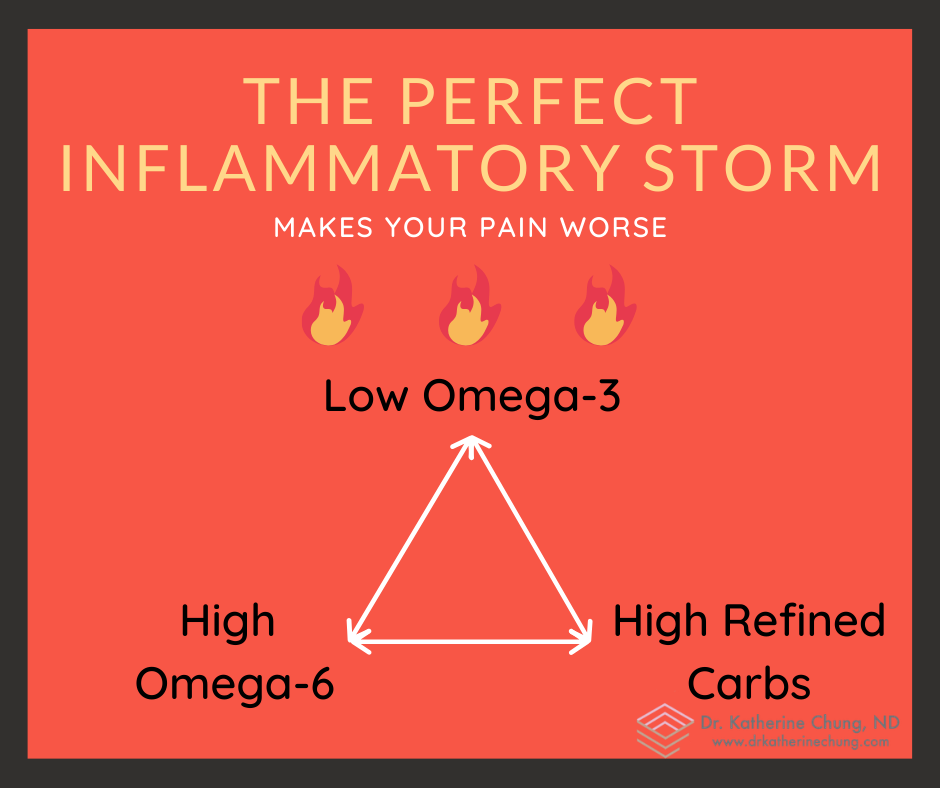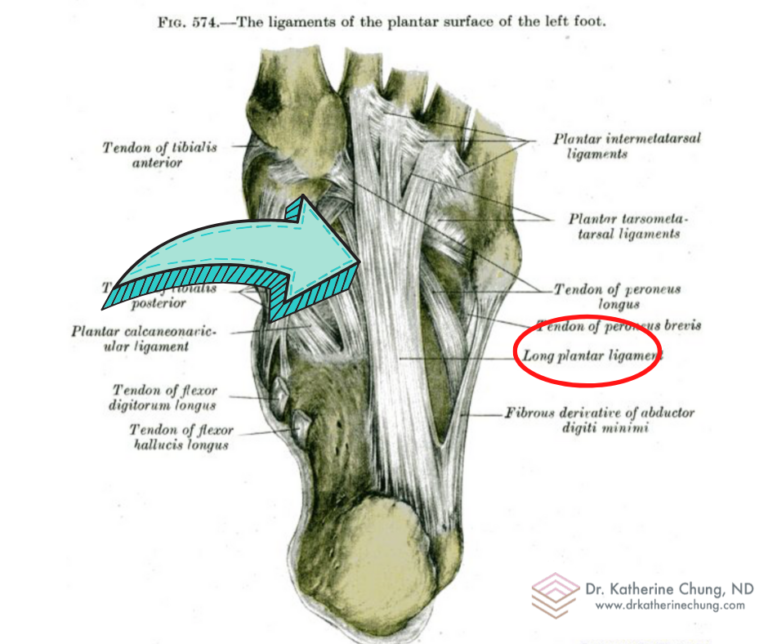
June 15, 2020
Inflammation: The Key To Manage Your Pain
June 16, 2020 - by Dr. Katherine Chung, ND - in Uncategorized
Plantar fasciitis is a common problem that many face in their lifetime and costs the U.S. healthcare system $192 – 376 million per year to treat. It accounts for about 15% of foot injuries a year in the U.S. – in 2018, about 1% of the U.S. population reported being diagnosed with plantar fasciitis. The prevalence is higher in the age group of 45 – 64 and the lowest in the age group of 18 – 44. Of those diagnosed, most are women – women are 2.5x more likely to suffer from plantar fasciitis due to the wider hip angle which predisposes their arches to fall/have flat arches.

Plantar fasciitis is inflammation of the long plantar ligament that causes heel pain (where it connects to the calcaneous (aka heel bone)). There are several risk factors for this, however the top 2 are obesity/prolonged weight bearing and poor foot mechanics. Poor foot mechanics or arch support can cause your arches to fall leading to tension on the plantar ligament causing micro-trauma and inflammation. If you pair this with standing on your feet all day (e.g. cashiers) and obesity, it increases force on that ligament worsening the inflammation.
Plantar fasciitis doesn’t necessarily hurt all day, every day. It is usually most painful after prolonged inactivity (e.g. sitting for long periods of time or first thing in the morning) – the first few steps will cause the most agony.
Technically, plantar fasciitis is considered self-limiting (i.e. will get better without treatment) however, it can take up to 18 months resolve on its own. Now, I’m not sure about you but 18 months of pain at the bottom of my foot does not sound enjoyable at all!
There are a variety of different treatments you can do to reduce healing time and get back on your feet quicker. I have found a mixture of acupuncture, chiropractics, massage therapy, and at home treatments to be the most effective.
Acupuncture is an extremely effective way to treat plantar fasciitis.
It works in 2 ways:
For my students and practitioners out there – here is a great protocol I have used to successfully treat plantar fasciitis.
For acute flares:
Rest and ice the plantar fascia – no need to do past 24 – 48 hours
For 48 hours after acute flare:
Nahin RL. Prevalence and pharmaceutical treatment of plantar fasciitis in United States adults. Journal of Pain. March 26, 2018. ncbi.nlm.nih.gov/pubmed/29597082
Vizniak N. “Plantar Fasciitis”.Orthopedic Conditions. Prohealth sys. 2018.
Young CC. “Plantar Fasciitis”. Medscape emedicine. https://emedicine.medscape.com/article/86143-overview. Updated Jan 22, 2019.
